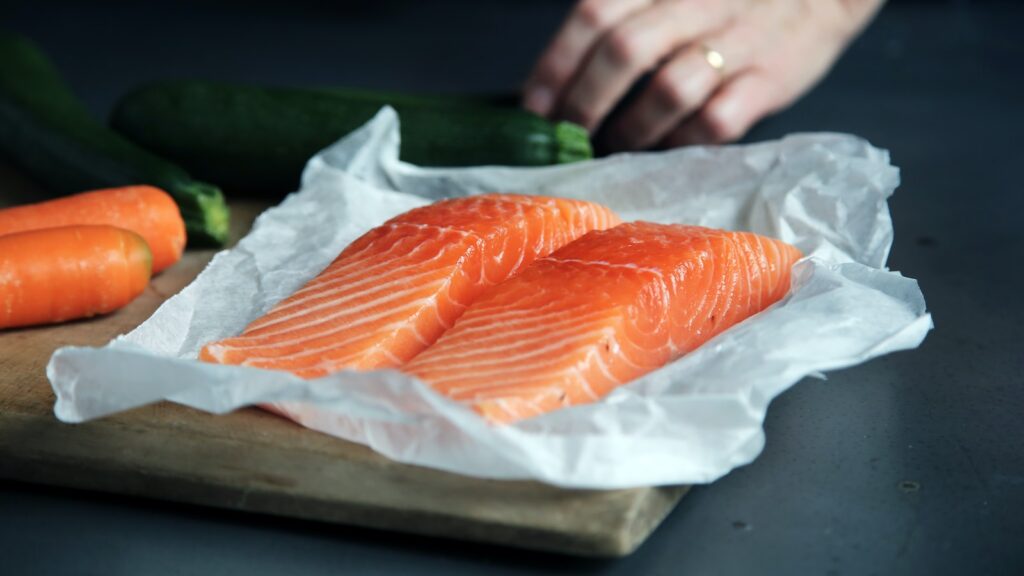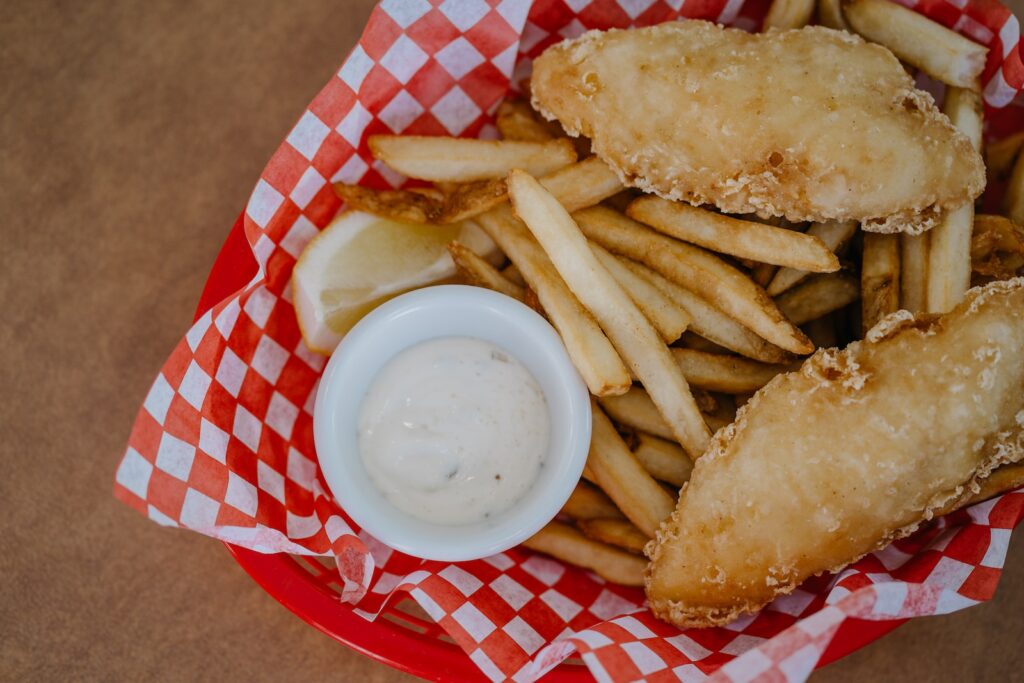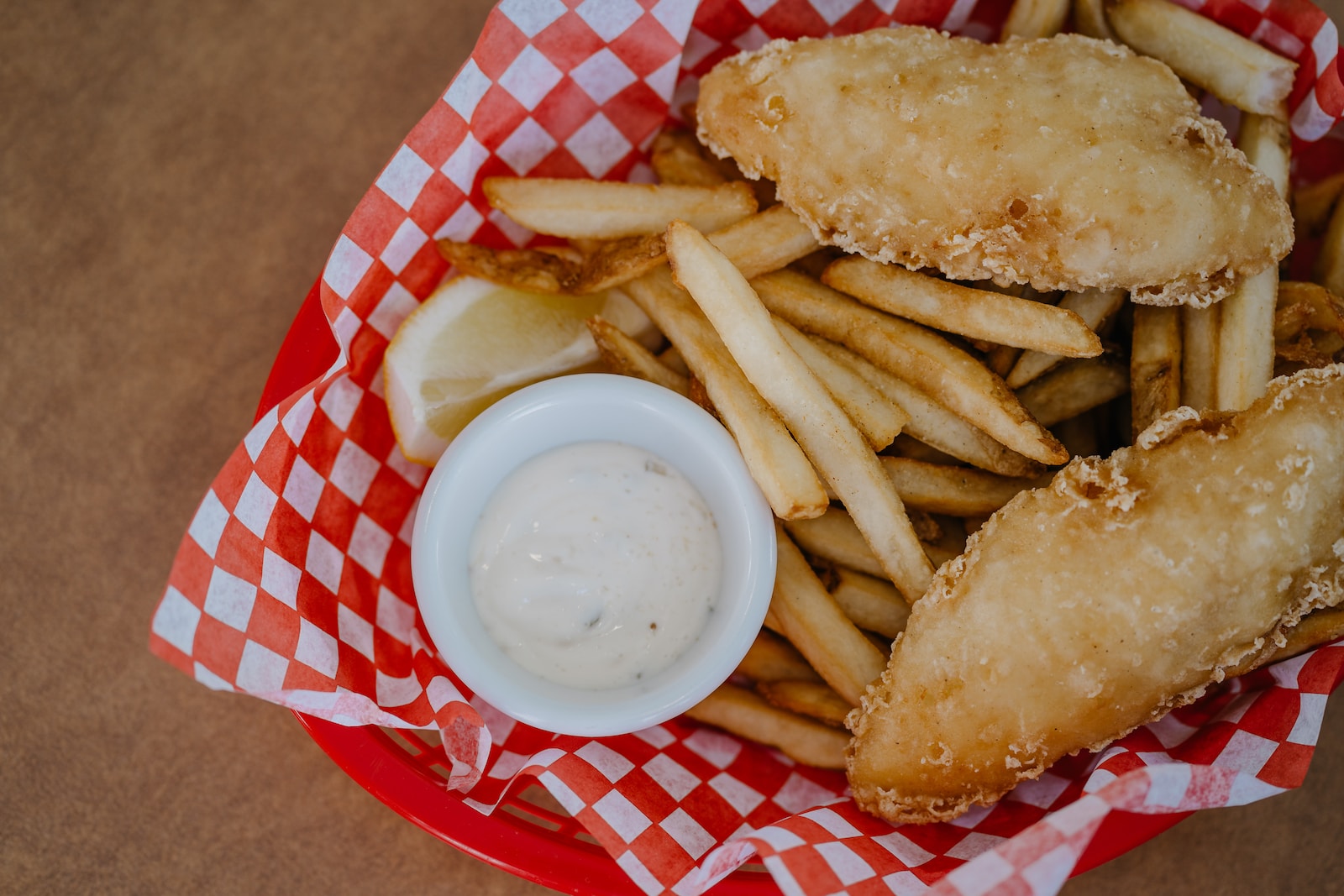Craving the perfect, golden fish and chips? We’ve all been there, eagerly awaiting a delicious bite only to be disappointed by a soggy, lackluster batter. But fear not! In this article, we’ll uncover the secrets to achieving that coveted crispy texture, ensuring every bite of your fish is pure satisfaction. Say goodbye to soggy disappointment and hello to a crispy and delightful fish batter that will leave you wanting more. So let’s dive right in and uncover the tips and tricks to perfecting your fish batter game.
Table of Contents
Choosing the Right Batter
When it comes to achieving a crispy and not soggy fish batter, the type of batter you choose is crucial. One popular option is to use beer in the batter. The carbonation in beer creates tiny bubbles, resulting in a lighter and crispier texture. Be sure to pour the beer slowly into the batter, allowing it to froth and mix evenly. Another option is to use baking powder in your batter. Baking powder acts as a leavening agent, creating air pockets that give your batter an extra crunchiness. Adding cornstarch or rice flour to the batter can also help in achieving a crisp exterior. These flours absorb moisture, preventing the batter from becoming soggy during frying.
Preparing the Fish
The quality and preparation of the fish are equally important in ensuring a crispy batter. Start by choosing fresh and firm fish fillets. Fresh fish tends to have a lower moisture content, which helps prevent the batter from becoming soggy. Patting the fish dry before battering is also crucial. Excess moisture on the surface of the fish can cause the batter to slide off or become soggy. To achieve a good adherence of the batter, dredge the fish in flour before dipping it into the batter. The flour creates a dry surface for the batter to cling to, resulting in a crispy coating.

Proper Dipping Technique
To ensure a crispy fish batter, it is essential to follow the proper dipping technique. Firstly, the temperature of the batter is crucial. Dip the fish into the batter when it is at the right temperature, typically cold or chilled. This will help the batter adhere better to the fish and create a crispy texture as it cooks. As you dip the fish into the batter, make sure it is evenly coated on all sides. This can be achieved by gently turning the fish in the batter, ensuring that every nook and cranny is covered. Avoid overmixing the batter, as this can result in a denser and less crispy coating.
Optimal Frying Conditions
Creating the perfect crispy fish batter also depends on the frying conditions. Preheating the oil to the right temperature is crucial. If the oil is too cool, the batter will absorb more oil, resulting in a greasy and soggy coating. If the oil is too hot, the batter may cook too quickly, leaving the fish undercooked on the inside. Aim for a temperature of around 350-375 degrees Fahrenheit (175-190 degrees Celsius) for the best results. Additionally, using an appropriate oil for frying is essential. Oils with a high smoke point, such as vegetable or peanut oil, are ideal for deep frying as they can withstand high temperatures without breaking down. Finally, maintaining a consistent oil temperature throughout the frying process is crucial for achieving a crispy batter.

Frying Technique
Proper frying technique plays a significant role in achieving a crispy fish batter. Avoid overcrowding the fryer or pan, as this can lower the oil temperature and result in a greasy coating. It is recommended to fry the fish in small batches, giving each piece enough space to cook evenly. Using a deep fryer or a wide pan with plenty of oil can also help in achieving a crispy exterior. The fish should be fully submerged in the oil to ensure even cooking and browning. When flipping the fish midway through frying, do so carefully to avoid disturbing the delicate batter.
Draining Excess Oil
After frying the fish, it is important to properly drain excess oil to maintain the crispness of the batter. Allowing the fish to rest on a paper towel is a common method. The paper towel absorbs excess oil and helps remove any excess moisture. For improved drainage, you can also use a wire rack. This allows air to circulate around the fish, promoting crispness and preventing the bottom from becoming soggy. Another option is to use a slotted spoon to remove the fish from the oil, allowing any excess oil to drip off.

Serving Recommendation
To fully enjoy your crispy fish batter, it is recommended to serve the fish immediately after frying. The longer it sits, the more likely the batter will lose its crispness. Accompanying the fish with a side of tartar sauce is a classic choice. The tangy and creamy flavors of the sauce complement the crispy exterior of the fish perfectly. You can also add a squeeze of fresh lemon juice over the fish for a touch of brightness and freshness.
Troubleshooting Soggy Batter
If your fish batter ends up being soggy instead of crispy, there are a few troubleshooting steps you can take. Firstly, check the consistency of your batter. If it is too thick, it may absorb more oil and result in a greasy coating. Adding a bit more liquid, such as beer or sparkling water, can help lighten the batter and achieve a crispier texture. Secondly, consider increasing the oil temperature. If the oil is not hot enough, the batter will have more time to absorb oil before crisping up. Finally, using a lighter batter can help in achieving a crispy coating. Experiment with different flour ratios or alternative crispy coatings, such as panko breadcrumbs or tempura batter.
Alternative Crispy Coatings
For those looking to experiment with different types of crispy coatings, there are several options to consider. One popular alternative is to use panko breadcrumbs. Panko breadcrumbs are light and airy, resulting in a crispier texture compared to regular breadcrumbs. They can be used alone or mixed with flour to create a crunchy coating for your fish. Another option is to try a tempura batter. Tempura batter is made with a combination of flour, cornstarch, and ice-cold water. The resulting batter is incredibly light and crispy when fried. For a unique twist, you can even experiment with coatings made from crushed potato chips or cornflakes. These alternative coatings can add an extra layer of flavor and crunch to your fish.
Tips and Tricks
To further enhance the crispiness of your fish batter, here are a few tips and tricks to keep in mind. One effective technique is to chill the batter before dipping your fish. This helps the batter adhere better and creates a crisper texture when fried. If you’re looking for an extra crunch, you can try double dipping your fish in the batter. Dip the fish into the batter, let it drain briefly, then dip it back into the batter for a second coat. This creates a thicker and more crispy coating. Lastly, consider using sparkling water instead of regular water in your batter. The carbonation in the sparkling water helps create a lighter and airier texture, resulting in a crispier final product.
By following these tips and techniques, you can ensure that your fish batter turns out crispy and delicious every time. The choice of batter, the preparation of the fish, and the frying technique all play significant roles in achieving that perfect crunch. So, gather your ingredients, heat up your oil, and get ready to enjoy a plate of crispy fish that will delight your taste buds.
